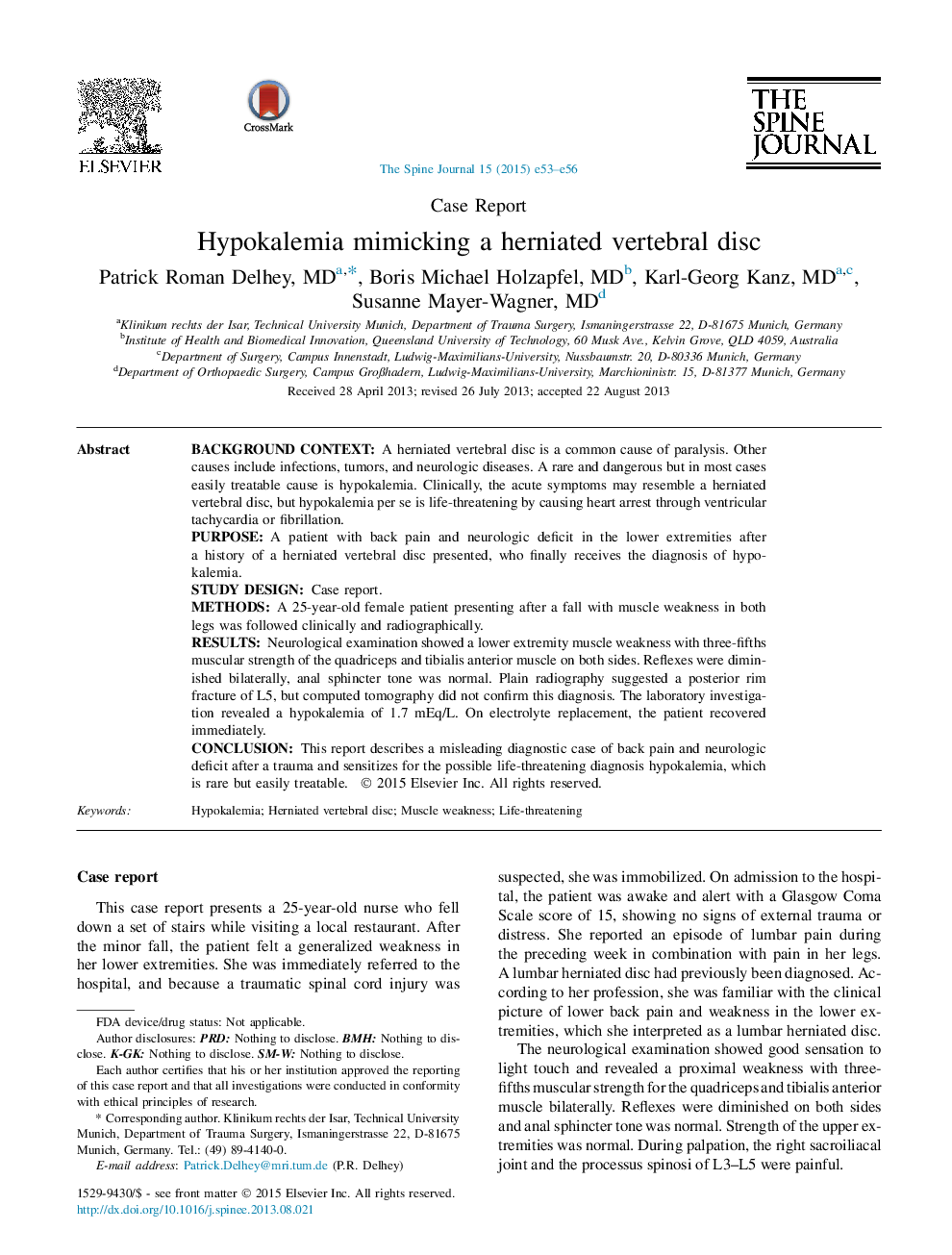| Article ID | Journal | Published Year | Pages | File Type |
|---|---|---|---|---|
| 6211996 | The Spine Journal | 2015 | 4 Pages |
Background contextA herniated vertebral disc is a common cause of paralysis. Other causes include infections, tumors, and neurologic diseases. A rare and dangerous but in most cases easily treatable cause is hypokalemia. Clinically, the acute symptoms may resemble a herniated vertebral disc, but hypokalemia per se is life-threatening by causing heart arrest through ventricular tachycardia or fibrillation.PurposeA patient with back pain and neurologic deficit in the lower extremities after a history of a herniated vertebral disc presented, who finally receives the diagnosis of hypokalemia.Study designCase report.MethodsA 25-year-old female patient presenting after a fall with muscle weakness in both legs was followed clinically and radiographically.ResultsNeurological examination showed a lower extremity muscle weakness with three-fifths muscular strength of the quadriceps and tibialis anterior muscle on both sides. Reflexes were diminished bilaterally, anal sphincter tone was normal. Plain radiography suggested a posterior rim fracture of L5, but computed tomography did not confirm this diagnosis. The laboratory investigation revealed a hypokalemia of 1.7 mEq/L. On electrolyte replacement, the patient recovered immediately.ConclusionThis report describes a misleading diagnostic case of back pain and neurologic deficit after a trauma and sensitizes for the possible life-threatening diagnosis hypokalemia, which is rare but easily treatable.
